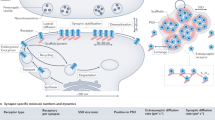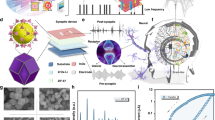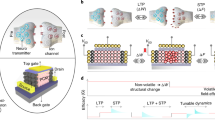Abstract
Far from being static transmission units, synapses are highly dynamical elements that change over multiple time scales depending on the history of the neural activity of both the pre- and postsynaptic neuron. Moreover, synaptic changes on different time scales interact: long-term plasticity (LTP) can modify the properties of short-term plasticity (STP) in the same synapse. Most existing theories of synaptic plasticity focus on only one of these time scales (either STP or LTP or late-LTP) and the theoretical principles underlying their interactions are thus largely unknown. Here we develop a normative model of synaptic plasticity that combines both STP and LTP and predicts specific patterns for their interactions. Recently, it has been proposed that STP arranges for the local postsynaptic membrane potential at a synapse to behave as an optimal estimator of the presynaptic membrane potential based on the incoming spikes. Here we generalize this approach by considering an optimal estimator of a non-linear function of the membrane potential and the long-term synaptic efficacy -- which itself may be subject to change on a slower time scale. We find that an increase in the long-term synaptic efficacy necessitates changes in the dynamics of STP. More precisely, for a realistic non-linear function to be estimated, our model predicts that after the induction of LTP, causing long-term synaptic efficacy to increase, a depressing synapse should become even more depressing. That is, in a protocol using trains of presynaptic stimuli, as the initial EPSP becomes stronger due to LTP, subsequent EPSPs should become weakened and this weakening should be more pronounced with LTP. This form of redistribution of synaptic efficacies agrees well with electrophysiological data on synapses connecting layer 5 pyramidal neurons.
Similar content being viewed by others
Article PDF
Author information
Authors and Affiliations
Corresponding author
Rights and permissions
About this article
Cite this article
Pfister, JP., Lengyel, M. Interactions between short-term and long-term plasticity: shooting for a moving target. Nat Prec (2011). https://doi.org/10.1038/npre.2011.5857.1
Received:
Accepted:
Published:
DOI: https://doi.org/10.1038/npre.2011.5857.1



